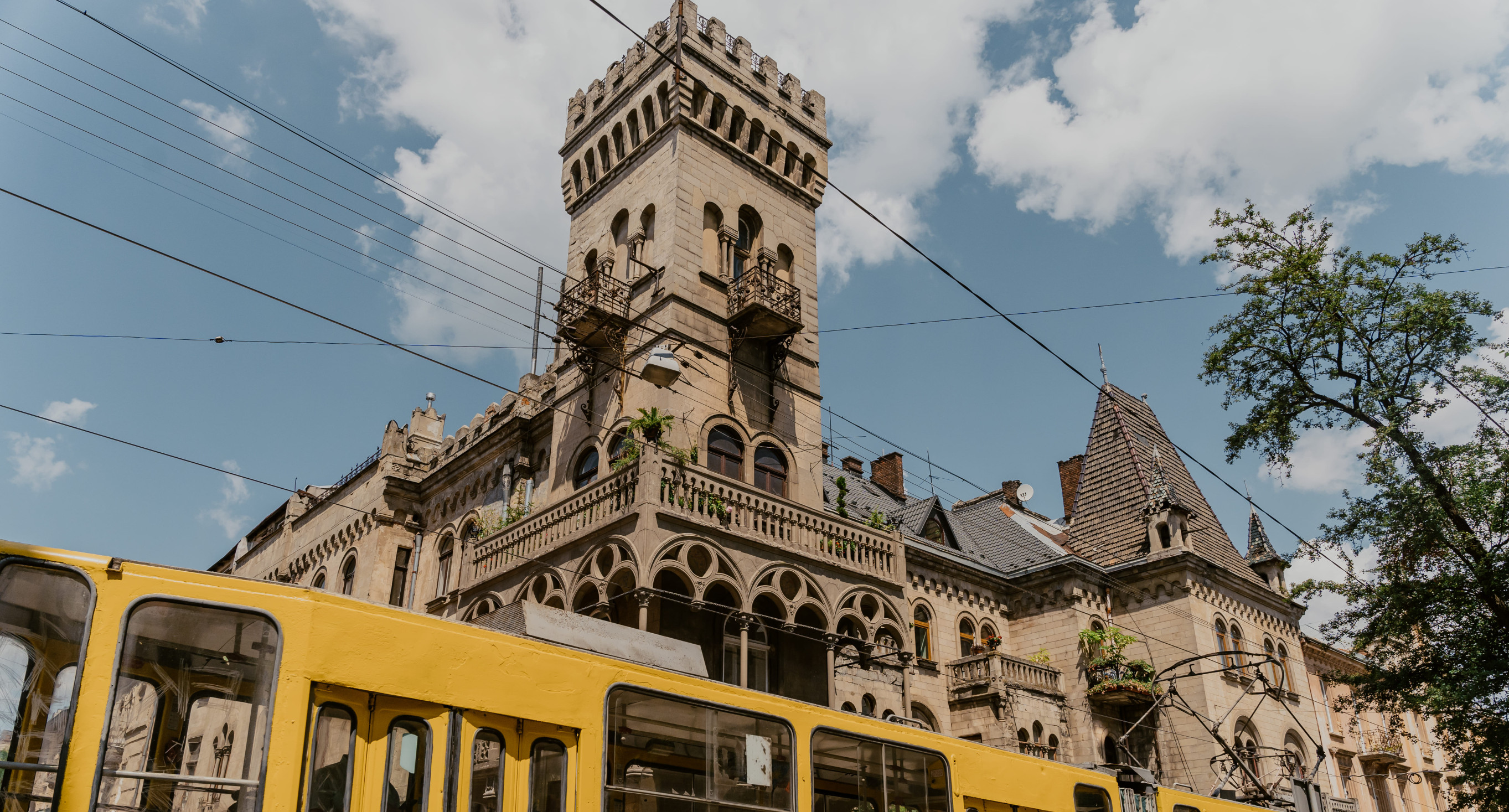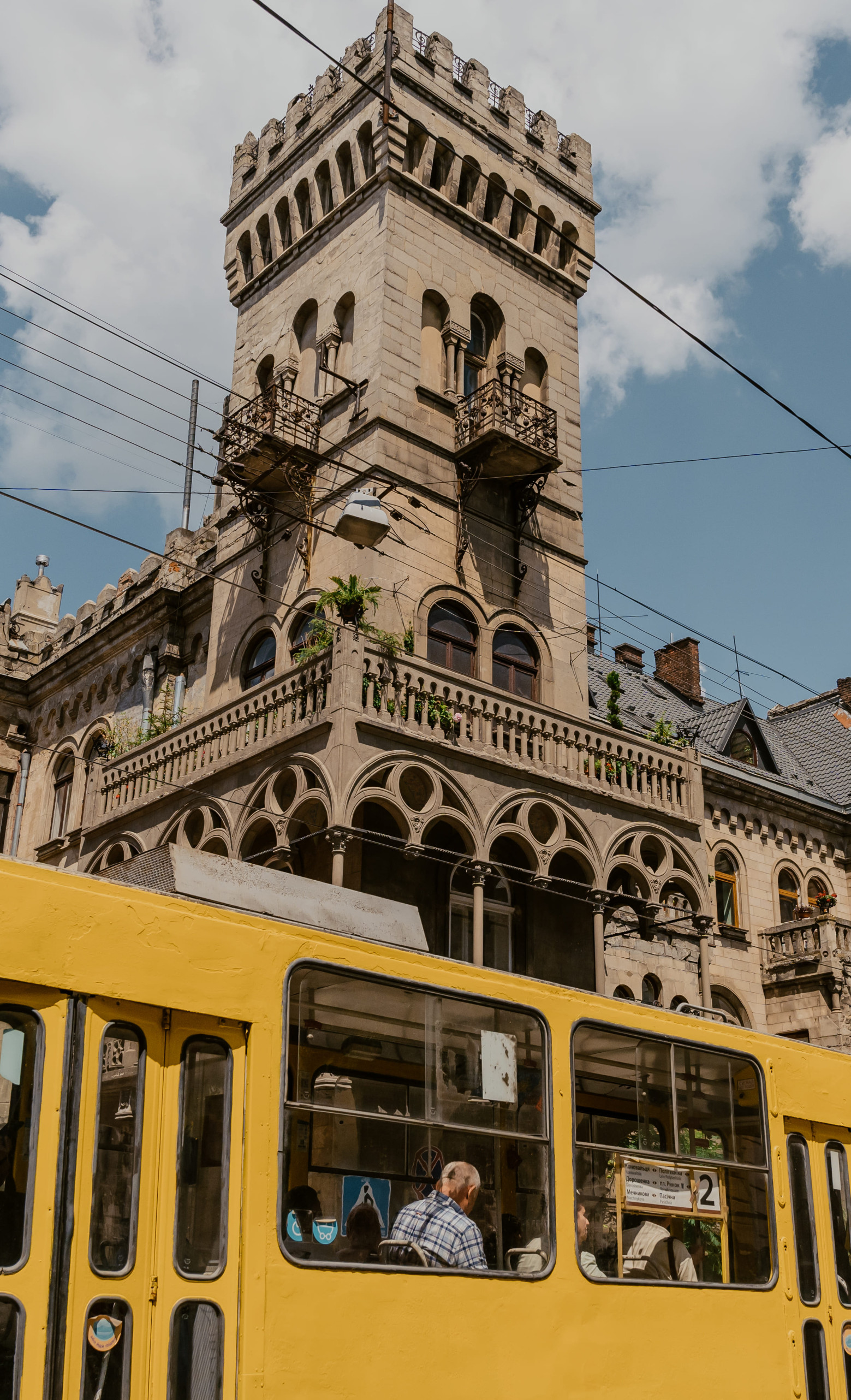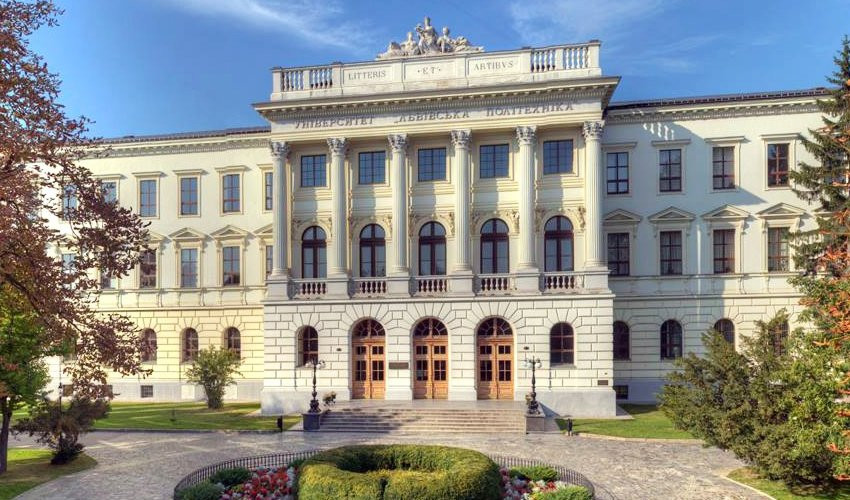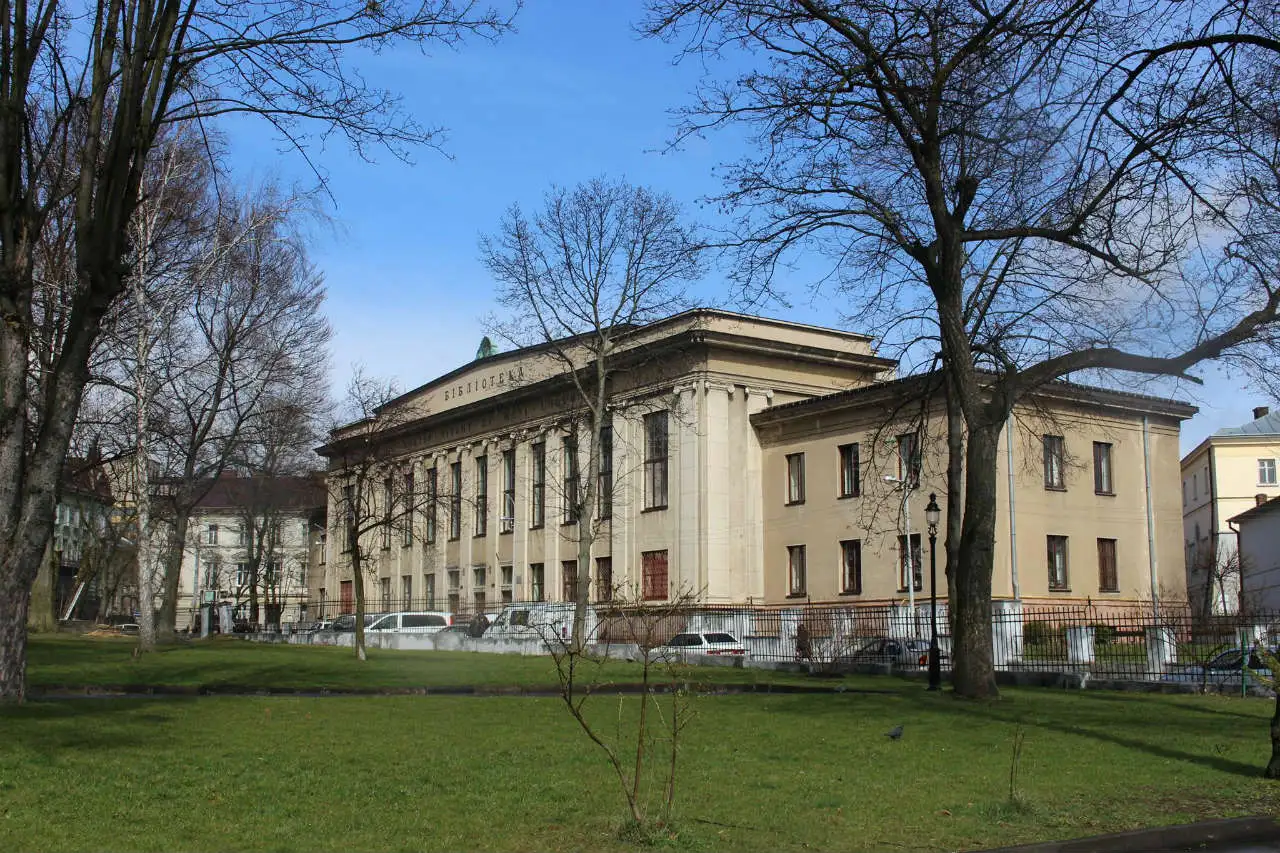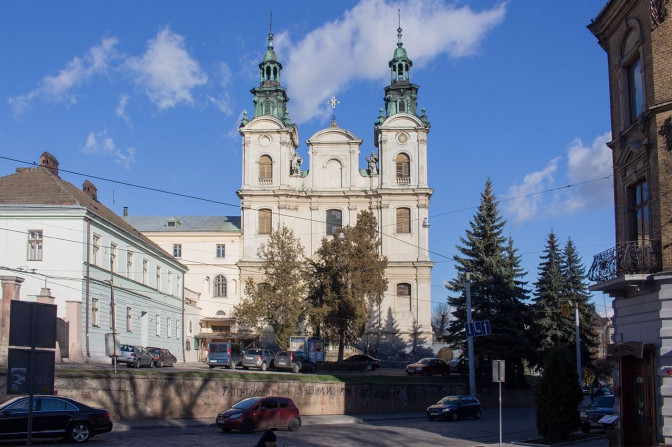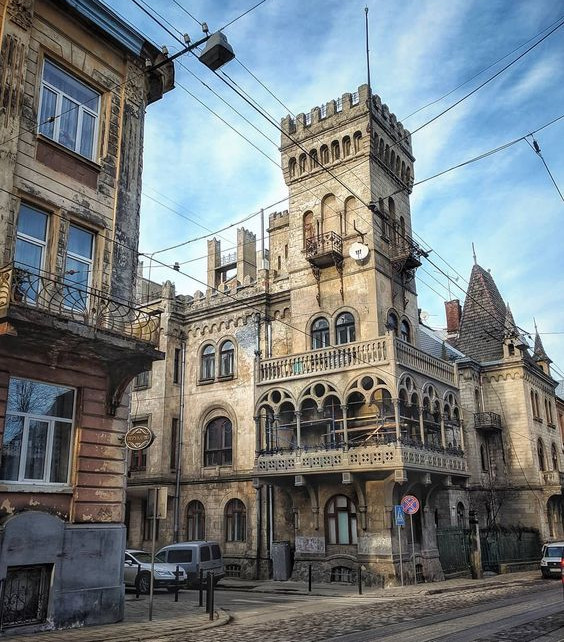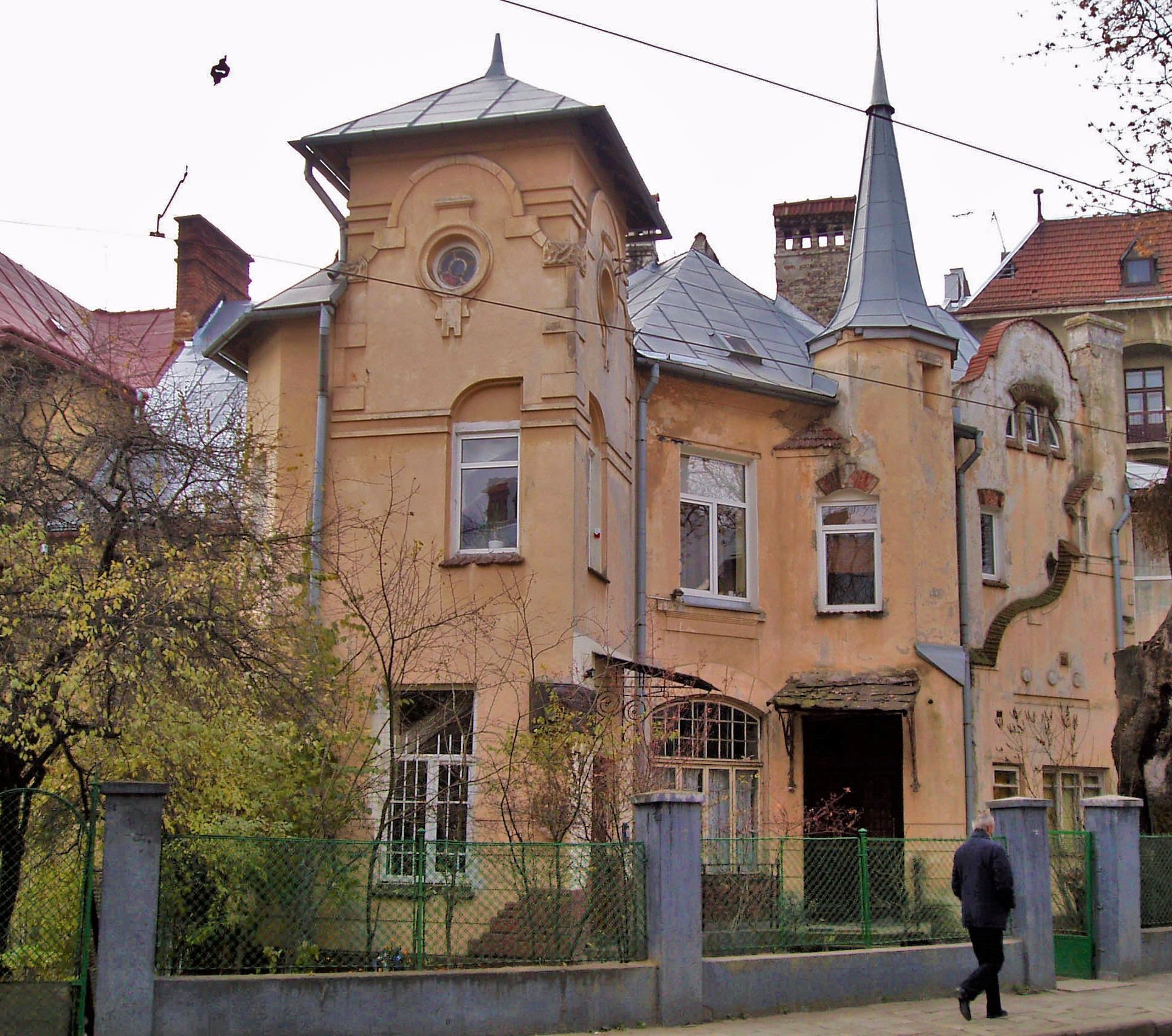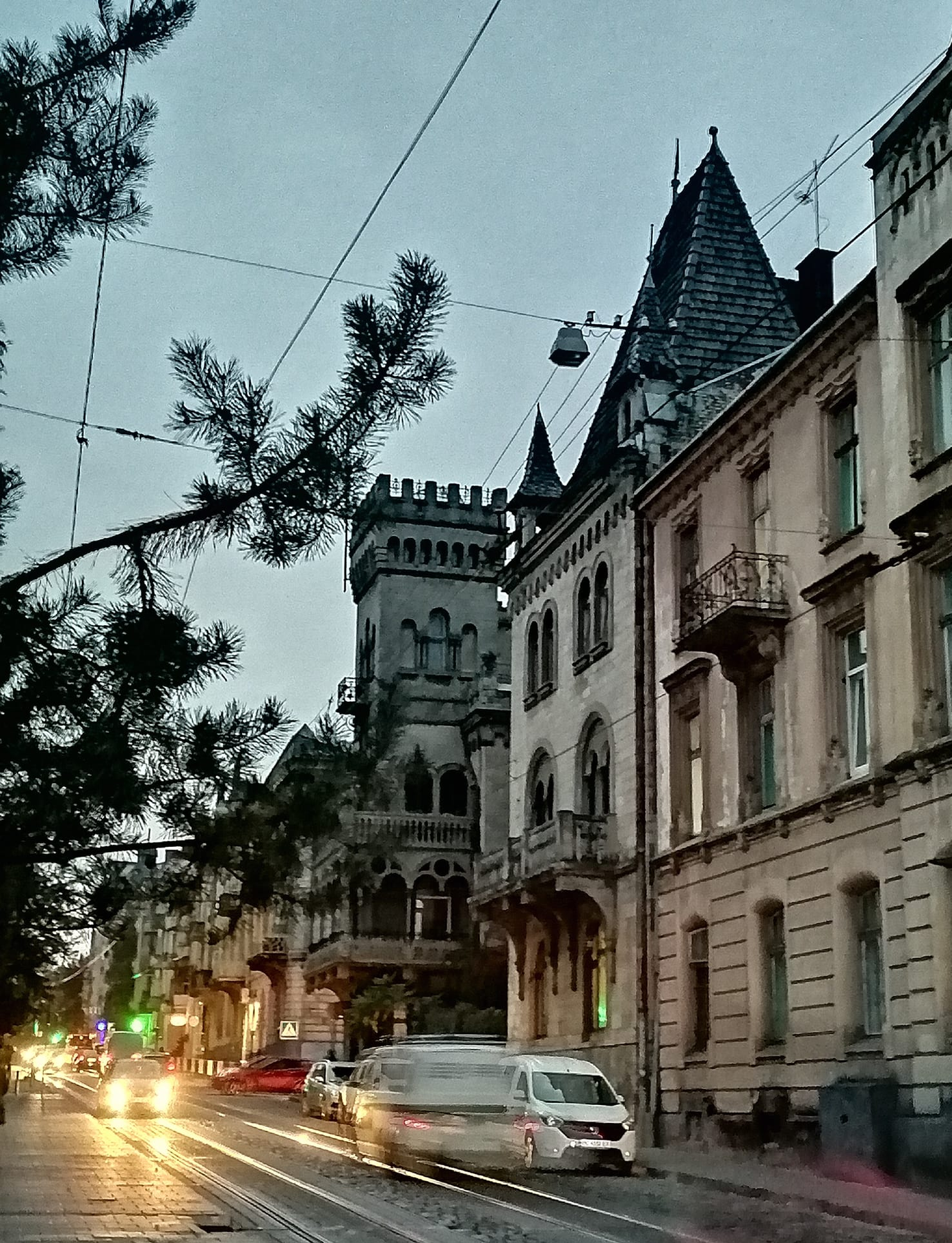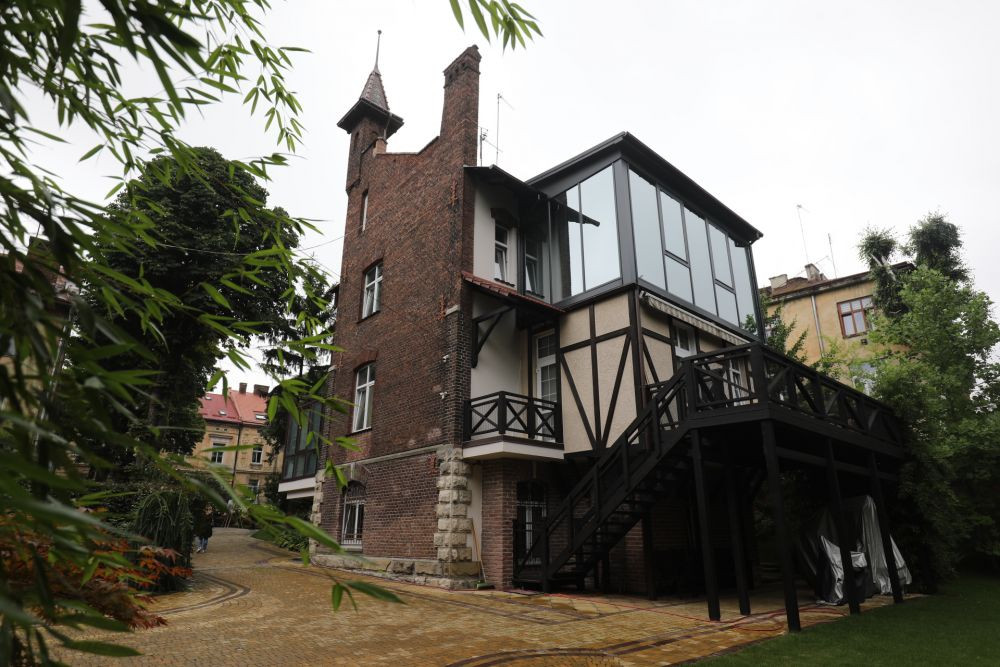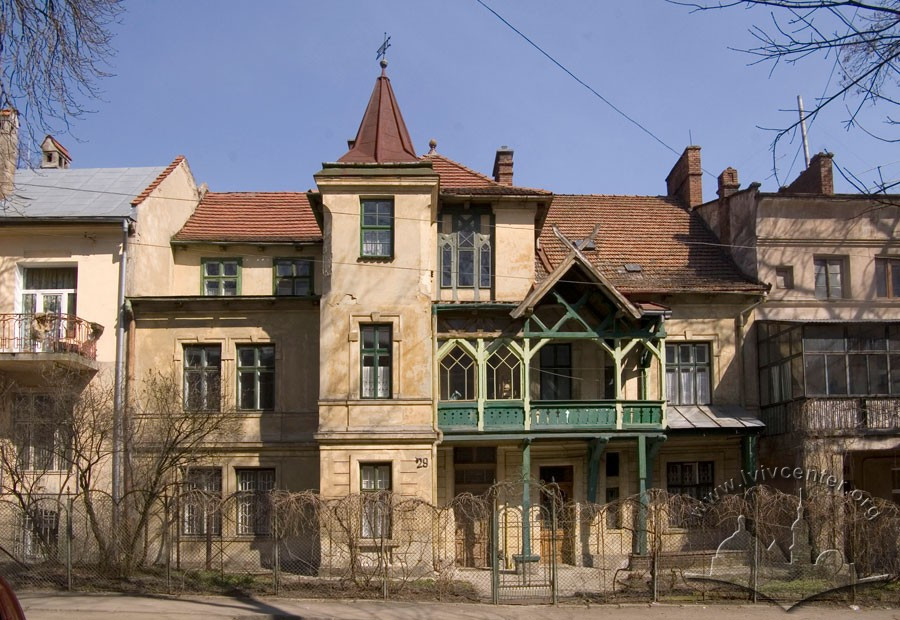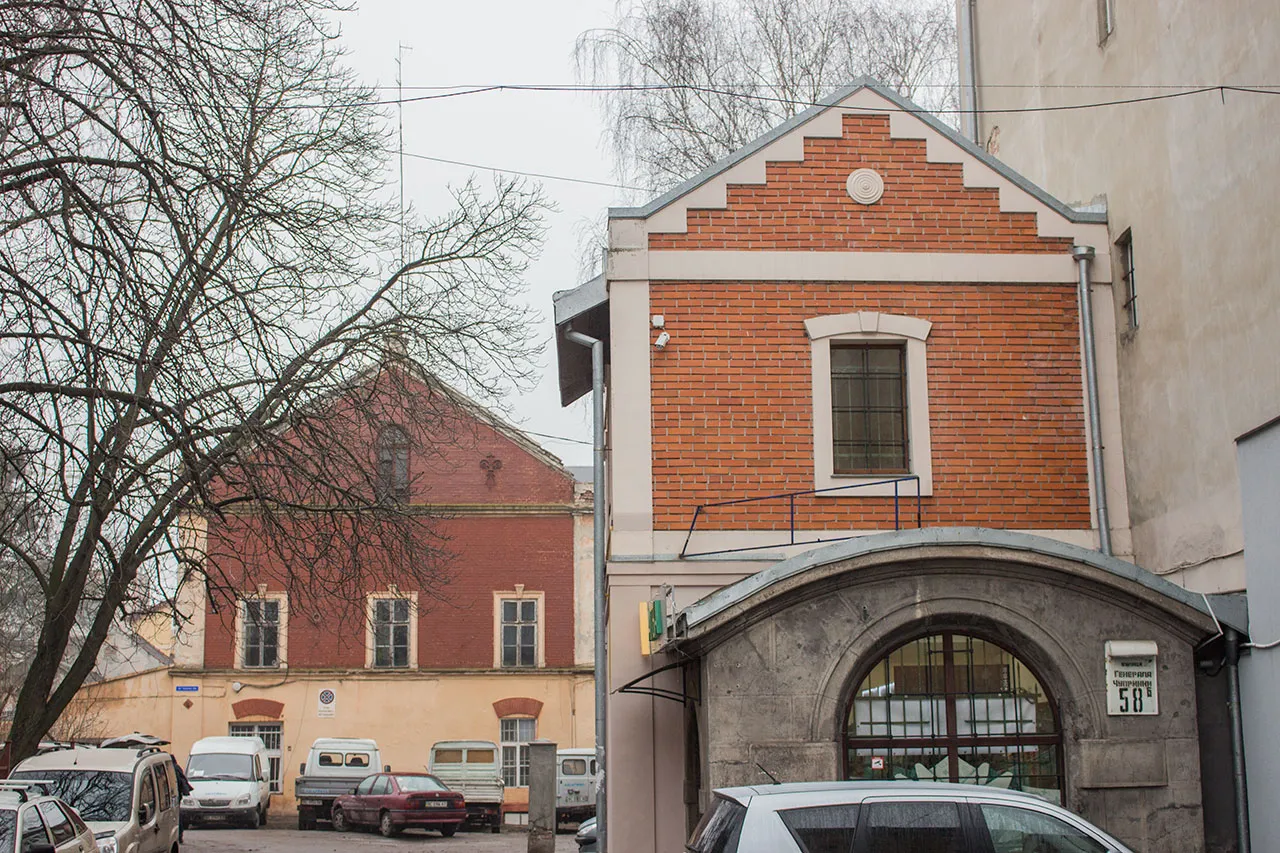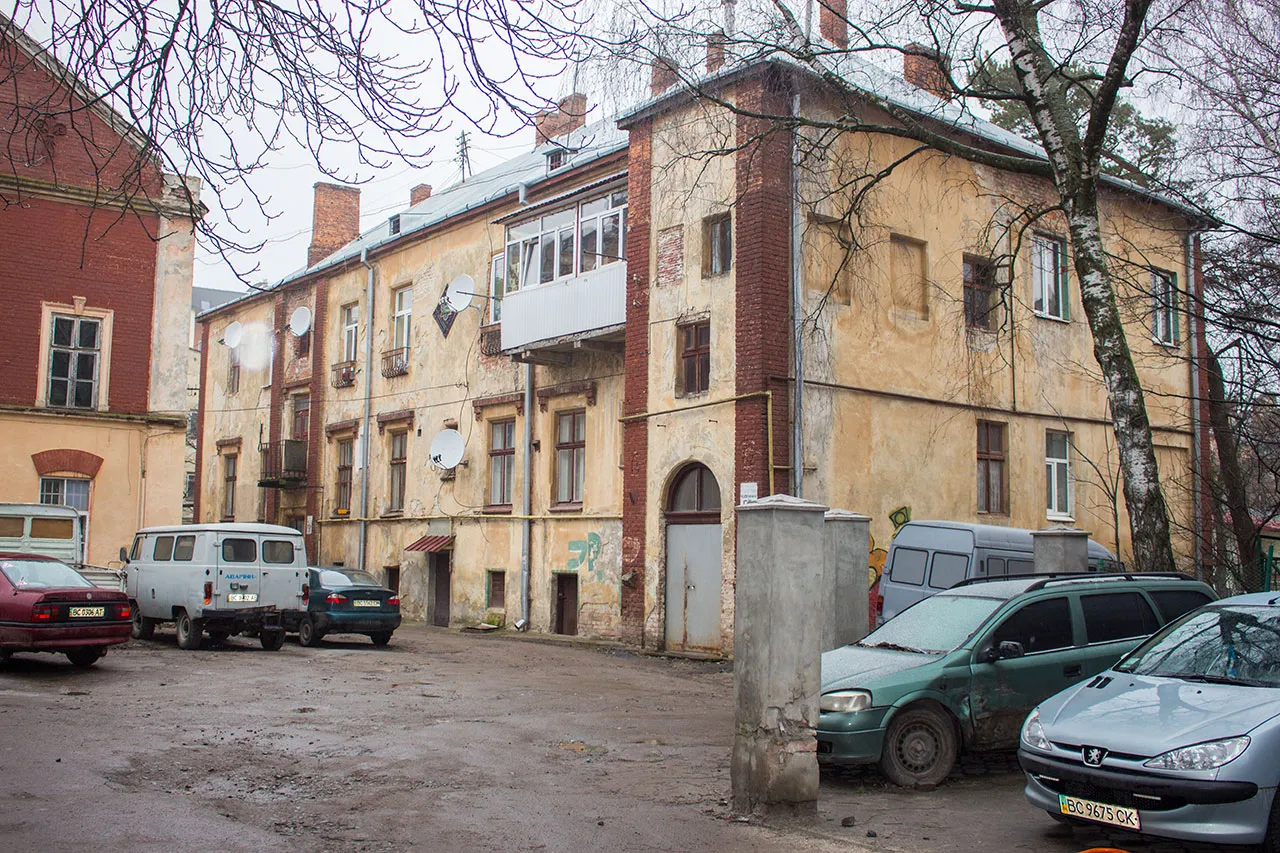Lviv is one of the oldest cities in Ukraine. Due to a favorable location on the intersection of the trade routes the city developed rapidly. There are reflections of different epochs in the city space. Even if you managed to thoroughly familiarize yourself with the central part, so-called Medieval city, believe me, Lviv still has a lot to surprise you! Come along with us and enjoy the sights, which are far from usual touristic routes. It will help You to discover the city, to feel the real vibes and energize yourself walking along cozy districts. Ok, let's go!
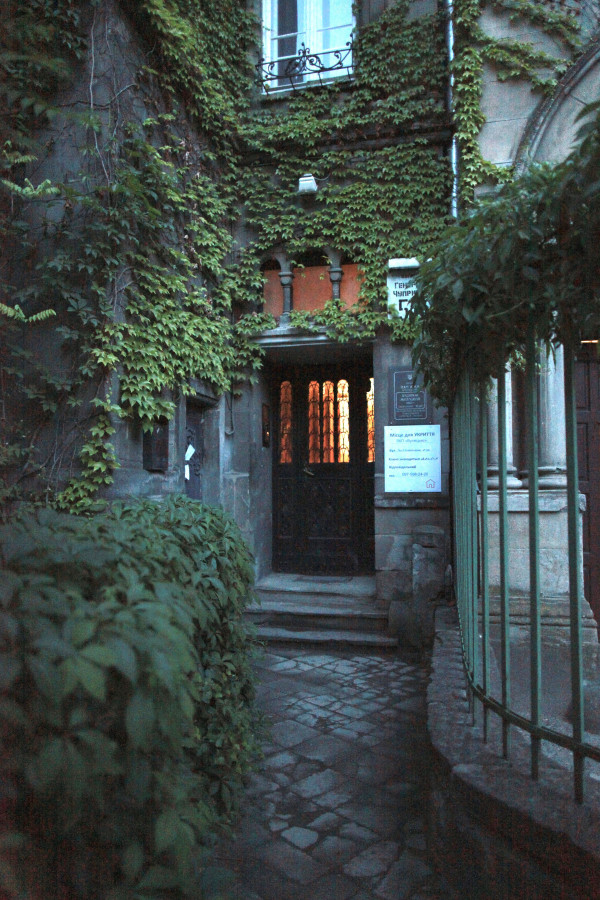
Novyi Svit (New world) is one of the best places for walks in Lviv .This district is located to the south-west from the city center. It is divided in three parts: Kastelivka, Frantsivka and Baiky. Let's start to discover Lviv New world from Kastelivka. In the end of XIX - beginning of XX century two Lviv well-known architects Julian Zachariewicz and Ivan Levynskyi planned to implement here the project of district with villas. Kastelivka took its name from “Castello”. It was the surname of the Italian family that lived here years ago. Zachariewicz and Lewinski planned to build 64 villas, but only 40 of them had been preserved to this day. Those romantic buildings resemble Medieval castles in miniature.
Find out more about villas and their residents walking along the proposed route.
You should start your walk through Kastelivka from the main building of Lviv Polytechnic. Although it does not belong to this district but affects it directly, since the first city residents of Kastelivka were professors of Lviv Polytechnic. A building in eclectic style was designed by Julian Zachariewicz, who was a professor, and later the rector of Polytechnic. "Litteris et artibus" (Art and science) - the aim of educational institution is attested on the facade of the building.
Nearby, on Profesorska St. the Scientific and technical library of Lviv Polytechnic is situated. It was built using exclusively concrete, iron and glass without any wooden elements in order to prevent potential fire.
The next sight is Lviv Organ hall (historically - the church of St. Mary Magdalene) on Bandery St. The concerts of classical music, sound of the biggest organ in Ukraine, frescoes of famous artist Jan Henryk Rosen and Renaissance altar of the church - this place is definitely worth your attention. Moreover, with the Lviv City Card you will get a 20% discount for the tickets.
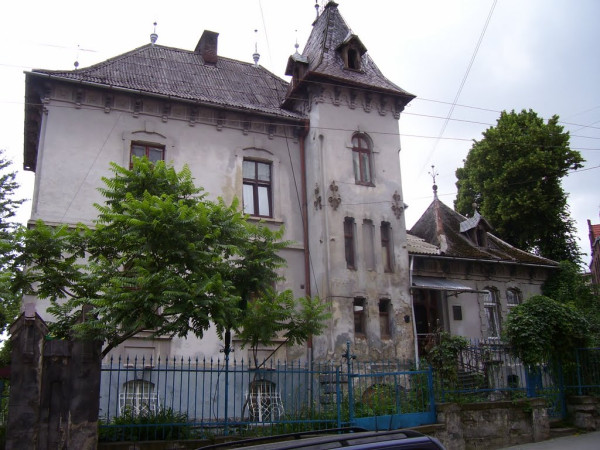
The building movement on Kastelivka was encouraged by laying the first tram line along Bandery St. in 1894.
Cross the tram line and stop in front of the monument of Mykhailo Verbytskyi. He created the melody of the Hymn of Ukraine. Behind the monument You may see the school #3 (historically - St. Mary Magdalene school as it was built in front of the church, which was mentioned above). In general, children from New world studied there. This is an eclectic building with the elements of the Neo-Romanesque and Neo-Gothic styles designed by Juliusz Hochberger in 1883-1884. Pay attention that there are two risalites with separate doors. There were entrances to the former boys’ and girls’ parts of school. To the right, from Chuprynky St., in 1928.-1930. a wing in Art-Deco style was added. Now, in this wing a school with Polish as the language of teaching is located.
Behind the school, on 4 Verbytskoho St. we may see the first villa on our route - a former house of the architect Ludwik Baldwin-Ramułt, designed by himself. It was built in 1890. After World War II the villa was redesigned into an apartment building.
Let’s come back on Chuprynky St. It divides New World in two parts: Kastelivka and Baiky. And if Baiky were built up mainly with apartment buildings, Kastelivka became an area where the architects tried to implement the idea of a garden city, but they succeeded only partially. Since the electric tram line was laid there in 1906-1907, Kastelivka was swallowed up by multi-storey apartment buildings.
The villa at 5 Chuprynky St. is a mixture of Neo-Renaissance and Alpine architecture elements. It was built in 1889-1890 according to the project of A. Kamienobrodzki, and its owner at the time of construction was the publisher of Lviv postcards and paper merchant Jan Bromilski. A memorial plaque on the facade informs that Ukrainian revolutionary and poet Anatoliy Lupynis worked in this house in 1995-1999.
And although when we talk about Kastelivka, the focus is on the villas, it is impossible to ignore the house on 11A Chuprynky St., because this is one of the best examples of Hutsul Secession. This style was initiated by architect Ivan Levynskyi, the essence of which lay in using the features of Ukrainian folk rural architecture to stylize city houses. Enter the courtyard of the Bank Pivdennyi at 11 Chuprynky St. The best view of the building opens from here. The rust resembles wooden logs, delicate concrete balconies and verandas seem to be carved in wood, and the facade is crowned with a sign of Sun on top.
Let’s head to Kotliarevskoho St. It was to become the main traffic artery of Kastelivka. Also a covered market was planned between Bohuna, Nechuy-Levytskoho and Kotliarevskoho streets. But since the tram line was laid along the street, this space had become too valuable to be "wasted" for a market, so it was built up with tenement houses.
Pay attention to the roof of the house at 12 Kotliarevskoho St. It is crowned with a weather vane, which silhouette resembles the painting by M. Bidniak "Angels over Lviv".
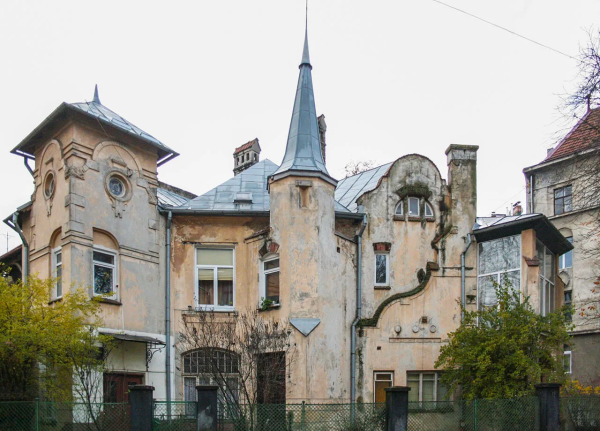
Do you remember the library of Lviv Polytechnic, which we saw at the beginning of the walk? The tenement building at 17 Kotliarevskoho St. belonged to its first librarian Antoni Jakubowski. It was built in 1910-1911 by architect and builder Józef Hornung in the Secession style. The top of the facade is decorated with "Peacock'' majolica panel. The next house at number 19 is absolutely similar to the previous one, except that on its roof you can see a small weather vane in the shape of a unicorn.
The villa at 27 Kotliarevskoho St. has a complex layout and an accumulation of various asymmetrical towers, gables, niches, windows, which allows you to perceive it differently from different angles. There are still disputes about who designed this building: J. Zachariewicz and I. Levinskyi, V. Sadlowski or E. Żychowicz.
The house belonged to the famous Polish artist Zygmunt Rozwadowski, who was a student of Jan Matejko and co-author of the famous painting "Panorama Racławicka", which depicts the victory of the rebels led by Tadeusz Kosciuszko over the troops of the Russian Empire in 1794. For the first time "Panorama Racławicka'' was exhibited in Lviv, in Stryi Park during the Galician Regional Exhibition of 1894, in a pavilion built by the architect L. Baldwin-Ramult, whose villa we saw at the beginning of the walk. The villa attracted artists. In 1906-1912 it housed the studio of Antin Pylykhovskyi, who is called the "Ukrainian Matejko".
In the interwar period, the USSR Consulate was located in the villa. On October 20, 1933, the OUN militant Mykola Lemyk commited the assassination, shooting State Political Directorate agent A. Maylov in protest against the Holodomor in Ukraine.
Now there is a medical institution in the villa.
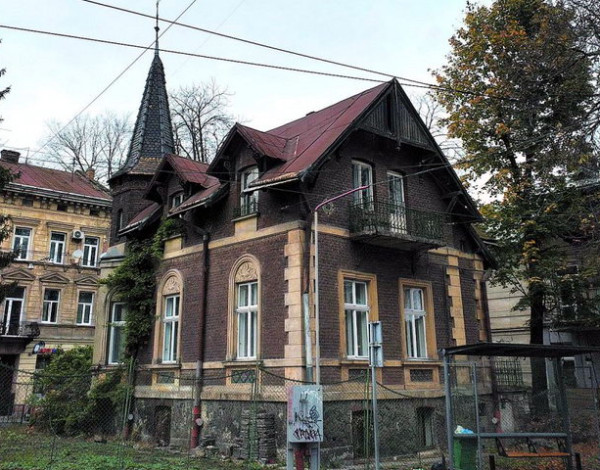
The villa at 21 Chuprynky St. is surrounded by noisy streets. It is also called the villa "On the Cross''. The dramatic name seems to have affected the fate of the villa's inhabitants. The owners often changed. The villa was built by the firm of I. Lewinsky for the rector of the Polytechnic, mathematician Placid Dziwinski. After World War I, the villa belonged to the merchant Szulim Wallach, and in 1920-1930 - to the famous pianist Leopold Münzer, who died in the Janowska concentration camp during the war. The famous pianist played in the notorious camp orchestra "Tango of Death", and none of the orchestra members survived to the end of the war. Since 1932, the villa was a home to the family of Olena Sheparovych and Volodymyr Kuzmovych, Ambassador to the Sejm of the Second Polish Republic, Head of the Secretariat of the Ukrainian National Democratic Association, editor of the newspaper "Meta". In 1939 he was arrested by the Bolsheviks and died in exile in Komi.
After the Kuzmovych family, this house was taken by Mykola Ostroverkhov, an ardent art collector whose collection made a huge sensation in Lviv in the late 80s. His methods of collecting valuable things were not quite honest. It was rumored that he sent his agents to potential "victims" with the message that they would soon be sent to Siberia, so they should quickly sell everything valuable and buy warm clothes for exile. Frightened people sold valuable things for nothing and waited for the arrest, which mostly never came. M. Ostroverkhov bequeathed his collection to the Pushkin State Museum of Fine Arts in Moscow, but Lviv citizens were indignant with that, so, after all, the treasures remained in Lviv. Now the collection is divided between several departments of the Lviv National Art Gallery.
The villa at 29 Kotliarevskoho St. is also worth Your attention. A small building, with a tower and two wooden verandas, designed in the Swiss style, it belonged to the famous architect and art historian Jan Sas-Zubrzycki. Above the entrance door you can see a stained glass window made by Krakow Stained glass company Żeleński. The roof is decorated with a weather vane in the shape of the coat of arms of Sas.
The villa at 39 Kotliarevskoho St. was built in the late nineteenth century by Levynskyi's company in the Swiss style. In the interwar years it belonged to the famous Galician politician, one of the founders of the Ukrainian National Democratic Association Dmytro Levytskyi. The owners provided two semi-basement rooms of the house for students of Oleksa Novakivsky Art School. The students called their apartment "Kachyniy Dil" (The Duck valley). Their friends gathered here, organizing informal art hangouts. In September 1939, Dmytro Levytskyi was arrested by the NKVD and sent to the Gulag. Later, his punishment was commuted to exile in Uzbekistan SSR. He died there, never returning home again.
Some villas served their owners not only as a home, but also as an advertisement for their businesses. The owner of the villa at 41 Kotliarevskoho St. was a famous Lviv blacksmith Jan Daschek. Pay attention to wrought iron decorations on the facade. Daschek personally created them in order to show how good were his metal-working skills.
In the villa at 47 Kotliarevskoho St. Hescheles family lived. Henryk Hescheles was the founder and editor-in-chief of the Jewish newspaper "Chwila", which was published in Polish in 1919-1939. His daughter, Janina Hescheles, became the author of the memoirs about the Holocaust in Lviv entitled "Through the Eyes of a 12-Year-Old Girl".
On the opposite side of the street, in the house at number 30, there is the All-Ukrainian Jewish Charitable Foundation “Hesed-Arieh” and the museum "Following Galician Hebrews", which acquaints us with the disappeared Jewish world of Galicia. You can visit the museum by prior appointment, calling +38 067 68 20 257.
Let’s walk along Levynskoho St. and turn to Chuprynky St.

To our left at 45 Chuprynky St.there is the 5th Clinical Hospital. It was originally built as the Main Post Office. During World War II, the Institute of Rudolf Weigl (Institute for Typhus Research) operated there. Rudolf Weigl was a doctor and microbiologist who invented the vaccine against typhus.
The house at 50-52 Chuprynky St., is like an illustration to the adage "My home is my fortress". It is considered to be one of the manl architectural landmarks in the New World and at the same time a lovely example of Mediterranean or Venetian neo-Gothic style. The house was built in two stages. In 1900-1901, the part at number 50 was built. It was designed by architect Józef Sosnowski and built by Iwan Lewinsky architectural firm. In the courtyard we may see an additional wing. There were stables on the ground floor and servants' rooms on the first floor. In 1907, a tram line was laid along Chuprynky street, so Józef Sosnowski decided to build a second part with a tower at number 52. Such powerful quadrangular towers are typical for the Crusader castle in Palestine. Sosnowsky together with A. Zachariewicz had their own construction company, which specialized in the production of reinforced concrete structures. Therefore, the house itself was to become an advertisement for their business. The building is decorated with a loggia, sculptures, and towers. The gate to the villa is guarded by a stone lionю The arch above the entrance and the ceiling of the balcony are decorated with paintings. Initially, the house was intended for one family, but in 1922 it was redesigned as an apartment building. The first owner of the house was Józef Sosnowski, and the second - Alfred Besiadecki. Therefore, the palace has a double name Sosnowski-Besiadecki.
The last object of our walk will be the former Ivan Levynskyi factory at 58A Chuprynky St. I. Levynskyi was an architect, professor of Lviv Polytechnic, public figure, successful entrepreneur. His construction company was the largest one in Galicia. It consisted from an architectural bureau, a construction company, building materials store, a tartak and a ceramic factory.
There was a building boom in Lviv in the period of 1890-1910. Levynskyi skillfully used this situation, creating his famous construction concern, which united all stages of construction: selection and purchase of land, design and approval of the project, construction, decoration, engineering networks, installation of necessary equipment, sale and lease of real estate. He closely cooperated with other architects and artists, including O. Novakivskyi, O. Kulchytska, I. Trush, M. Sosenko, etc.
In 1913, Levinskyi's factory had 800 employees. Levinskyi actively included new technologies into the production process, in particular, here at the factory he had two steam engines, 3 dynamos, 7 electric motors. The factory was equipped with electric lighting, ventilation and technological innovations.
Taking care of advertising his company, Levynskyi arranged with tram drivers to announce "Levynskyi's factory!" when they stopped in front of his enterprise. Now this stop is called "5th Clinical Hospital".
You can finish the walk with a cup of aromatic coffee and something tasty in the cafe "Baguette" at 68 Chuprynky St.
